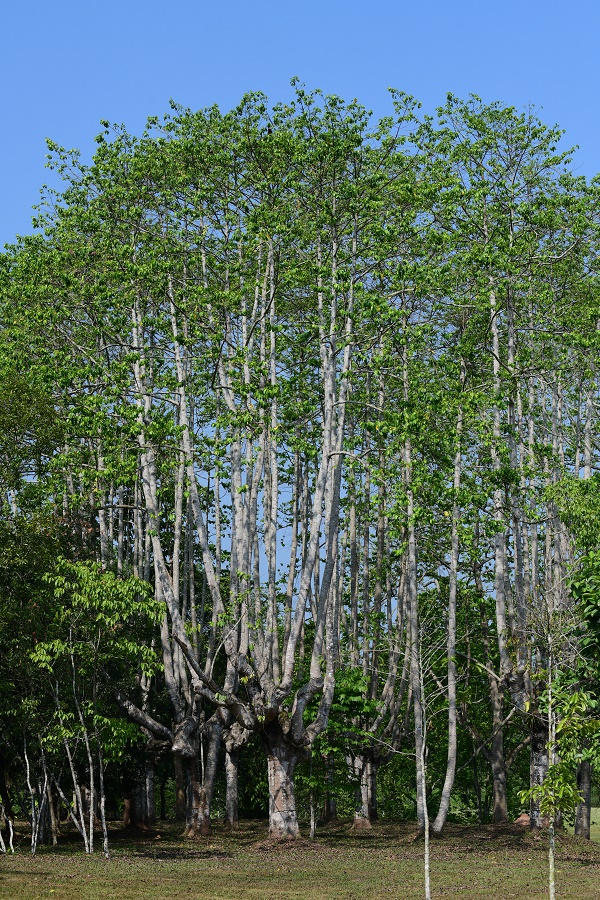Cananga odorata,commonly known as ylang–ylang and the ‘king’ of floral scent, is a perennial tropical evergreen tree of the Annonaceae family in Magnoliales. It is widely used in the perfume and essential oil industries due to its unique floral scent. However, the phylogenetic position and molecular mechanisms underlying the biosynthesis of floral scent volatile organic compounds (VOCs) are not well understood.
In a study published in New Phytologist, researchers from Xishuangbanna Tropical Botanical Garden (XTBG) generated a high-quality chromosome-level assembly for C. odorata, which is the first telomere-to-telomere (T2T) genome in magnoliids and provides a valuable genomic basis for obtaining insights into the phylogenetic position of magnoliids.
The researchers generated a high-quality T2T genome of C. odorata with 735.83 Mb, by combining a variety of sequencing platforms. It represents the highest integrity and assembly quality of genome in magnoliid plants reported to date. “This nearly complete genome assembly of C. odorata will undoubtedly be regarded as a benchmark for genetic research on C. odorata and Annonaceae plants,” said YANG Yongping of XTBG.
They used high-throughput sequencing technology, comparative genomics to identify evolutionarily conserved regions and differences, and functional genomics approaches to identify genes related to terpenoid biosynthesis.
The comparative genomic and phylogenetic analyses with other angiosperms have contributed to figure out the phylogenetic position of magnoliids. Results showed that C. odorata, as a member of magnoliids, is sister to eudicots, after their divergence from monocots.
Metabolomic studies of volatile organic compounds (VOCs) in essential oils and floral scents have shown that the complex, rich aroma of C.odorata flowers is a mixture of chemical compounds, mainly sesquiterpenes and aromatic esters, especially β-caryophyllene, indicating that these main compounds potentially contributed to the distinct floral scent in C. odorata.
Furthermore, they found remarkable duplication and expansion of TPS-a genes, which are involved in the production of major sesquiterpene components.Functional experiments showed that CoTPS21.2 and CoTPS21.3, which likely encode a kind of sesqui-TPSs, can specially generate only one major product, β-caryophyllene, which is the main compound of sesquiterpenes in C. odorata flowers. The two CoTPS21 genes may have co-evolved and both have been retained to contribute to the floral metabolism of C. odorata. In addition, they identified that CoSPL3 and CoSPL9 were the potential upstream transcription factors for the CoTPS21 genes expression.
“Our results reveal the molecular mechanism of unique floral scent biosynthesis in C. odorata and provide new insights into the phylogenetic position of Magnoliids,” said YANG Yongping.
Contact
YANG Yongping Principal Investigator
Key Laboratory of Tropical Plant Resources and Sustainable Use, Xishuangbanna Tropical Botanical Garden, Chinese Academy of Sciences, Menglun 666303, Yunnan, China
E-mail: yangyp@xtbg.ac.cn
First published: 19 July 2024

Flowers of Cananga odorata (Image by ZHU Renbin)

Cananga odorata (Image by ZHU Renbin)


